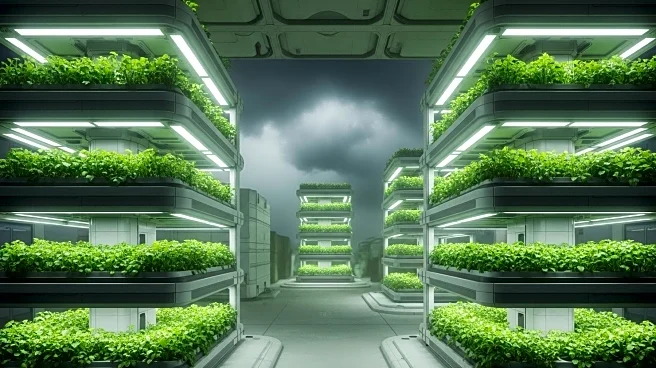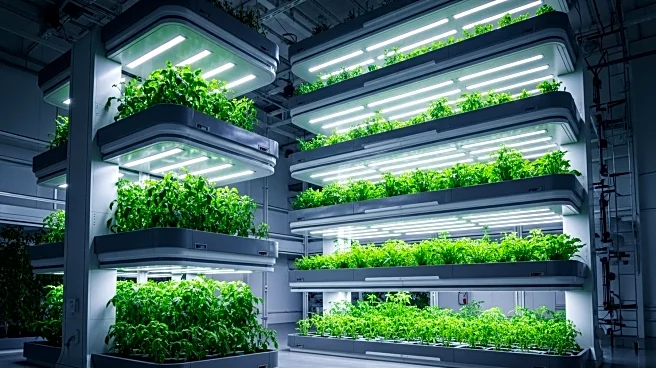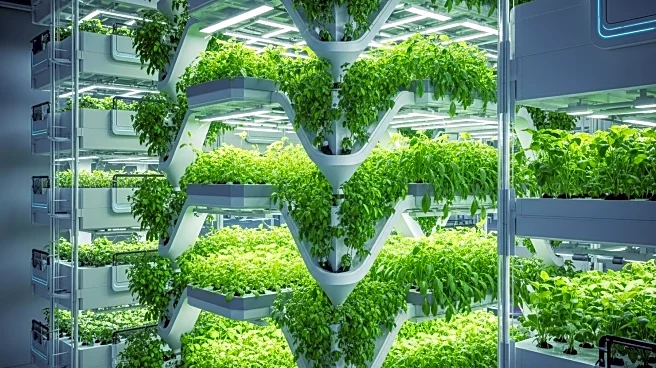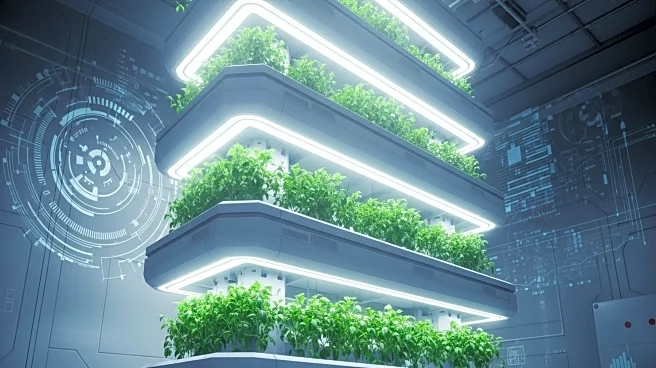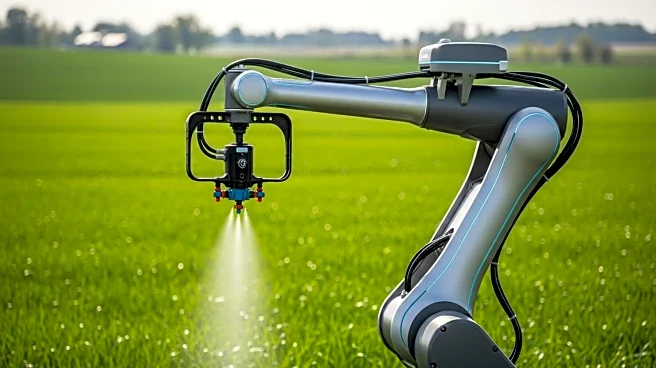What's Happening?
Vertical farming, once a booming industry, is facing significant challenges despite its potential benefits. Over the past decade, investors have poured over $6 billion into vertical farming startups, attracted by promises of reduced carbon emissions, pesticide use, and water usage. However, funding has sharply declined, with major players like Bowery Farming and AppHarvest collapsing due to high operational costs and expensive financing. The industry also struggles with a shortage of skilled labor and a lack of transparency in technology sharing. Despite these setbacks, the global market for vertical farming is projected to grow significantly, driven by environmental concerns and the need for sustainable food production.
Why It's Important?
Vertical farming represents a potential solution to several pressing global issues, including food security, climate change, and water scarcity. As the world's population grows and arable land becomes increasingly scarce, vertical farming could play a crucial role in meeting food demands. The industry's growth could also contribute to reducing the environmental impact of traditional agriculture. However, the challenges it faces highlight the difficulties of scaling new technologies and the need for innovation in energy efficiency and labor management. The industry's success or failure could have significant implications for global food systems and environmental sustainability.
What's Next?
The future of vertical farming will likely depend on advancements in technology, particularly in AI, which could improve efficiency and reduce costs. The industry may also see consolidation, with new players entering the market and adopting more sustainable practices. As concerns about food security grow, there may be increased interest in local food production, potentially boosting demand for vertical farms. However, the industry must overcome current challenges to realize its full potential.
Beyond the Headlines
Vertical farming's struggles underscore the broader challenges faced by emerging technologies in achieving mainstream adoption. The industry's experience highlights the importance of transparency and collaboration in technological innovation. It also raises questions about the role of government and private investment in supporting sustainable agricultural practices.
